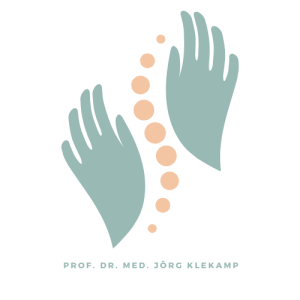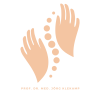Prof. Dr. med.
Jörg Klekamp
A warm welcome to my website!
I have practiced neurosurgery for many years and have earned a national and international reputation as an expert for diseases of the spinal cord, syringomyelia and the craniocervical junction. I can offer comprehensive information about these clinical disorders, recommendations on their management, and surgery if required. Don’t hesitate to contact me by email or letter describing your symptoms and complaints, to send radiological images (magnetic resonance images (MRI), CTs or X-rays) for evaluation or to ask questions. I am at your disposal with many years of experience.
Prof. Jörg Klekamp, MD
Medical Career

Main Areas of Interest
Ich habe über meine gesamte berufliche Karriere die Behandlung von Erkrankungen des Rückenmarks und des Kopf-Hals-Übergangs zu meinem Hauptarbeitsgebiet gemacht. In diesem Zeitraum habe ich über 5000 betroffene Patienten beraten und betreut sowie etwa 1500 persönlich operiert.
In jedem einzelnen Fall war die Empfehlung zu einer Operation das Ergebnis ausführlicher Gespräche und Untersuchungen des Patienten. Die Chancen und Risiken einer operativen Behandlung wurde sorgsam abgewogen und verglichen mit den Risiken, die eingegangen werden, wenn nicht operiert wird.
Für jeden einzelnen Patienten wird vorher dargelegt, wie die weitere Behandlung nach der Operation aussehen sollte. Sie ist nie mit dem Anlegen des Wundverbandes am Ende der Operation beendet, sondern umfasst vielfach im Anschluss eine rehabilitative Therapie in einem dafür geeigneten Zentrum. Dies wird bereits vor der Operation besprochen und in den ersten Tagen nach einer Operation dann endgültig mit dem Patienten zusammen festgelegt.
Auch danach geht meine Betreuung der Patienten weiter. Besonders bewährt haben sich ambulante Nachuntersuchungen mit dann aktuellen Kernspinbildern 3 Monate nach dem Eingriff. Dann ist normalerweise der Operationsbereich verheilt und man kann besprechen, wie die weitere Therapie aussehen sollte.
I have chosen diseases of the spinal cord and craniocervical junction as my primary areas of interest throughout my neurosurgical career. I have advised and cared for more than 5000 affected patients and operated on about 1500 of them personally.
In each individual patient, the recommendation for surgery was the result of thorough discussions and examinations. Advantages and risks of surgical treatment were carefully weighed against those which are faced if no surgery is performed.
For each patient undegoing surgery, it is explained in detail beforehand what further treatment is required after the operation. My treatment doesn´t end with the application of the wound dressing at the end of the operation. In general, it is advisable to plan an appropriate rehabilitation therapy in a suitable center or as an outpatient. This is finalized in discussions with the patient in the first days after surgery.
Patient care continues after discharge from the hospital. Outpatient follow-up examinations with up-to-date MRI images 3 months after the procedure have proven to be particularly useful. At that time, the area of surgery has healed, patients have returned to their daily acitivities, and further therapy can be advised.
Publications
Memberships
I am member Deutschen Gesellschaft für Neurochirurgie (DGNC), der Deutschen Wirbelsäulengesellschaft (DWG)
Scientific Reviewer
I work as a scientific reviewer for the following journals:
Neurosurgical Review
Central European Neurosurgery (ehemals Zentralblatt für Neurochirurgie)
Acta Neurochirurgica
Neurosurgery
Clinical Neurology and Neurosurgery
World Neurosurgery
Child´s Nervous System
